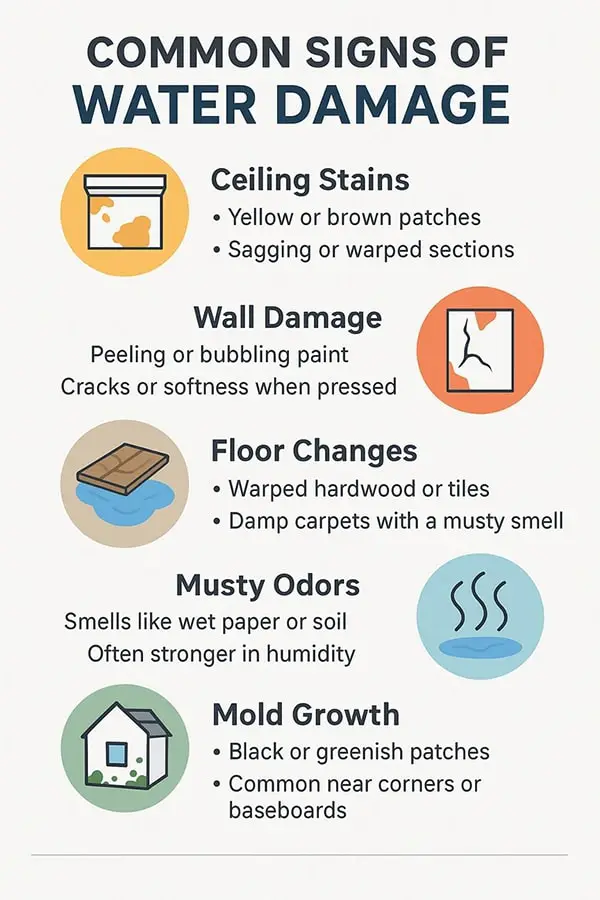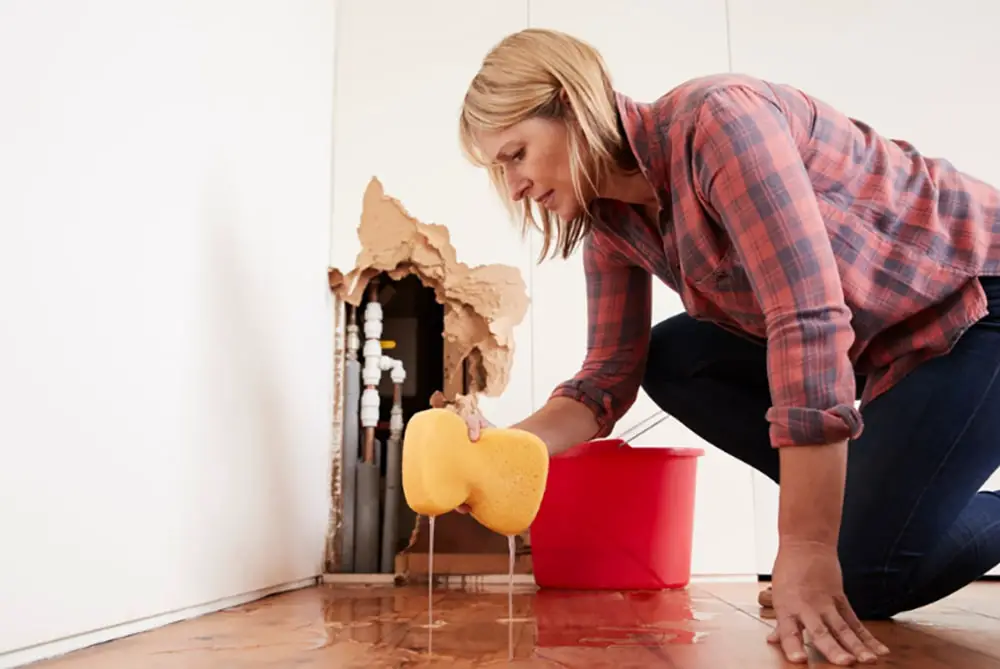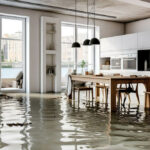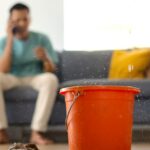You might ignore that little brown spot on your ceiling for weeks – or even worse, months – and while you try to dismiss it as a harmless part of home ownership, you know deep down inside it could be the start of something pretty awful.
Your gut instinct would be right. By the time water damage grows or darkens, the source of the issue has probably been busy damaging your home from the inside out, quietly, silently, and gradually.
If this sounds familiar, you are certainly not alone. At WetReset, we have seen hundreds (if not thousands) of homeowners face costly water damage restoration because they weren’t sure what water damage looks like or how to check for it properly.
This blog post will fix that by showing simple steps, tips, and hacks for checking for water damage. Let’s get started.
Common Signs of Water Damage in a House
Unfortunately, water damage problems rarely announce themselves with a trumpet call. On the contrary, they leave subtle hints that something is wrong, and the problem is that these hints aren’t always obvious.
To that end, you need to know how to spot water damage in a house quickly and evidently so you can avoid potential heartbreak and financial drama. Follow these tips, and you will hopefully avoid that fate!
What Does Water Damage Look Like on Walls and Ceilings?
It may sound slightly dramatic, but your walls and ceilings tell stories. Those yellowish-brown stains are water leaving its calling card. The reason for the coloring is simple: as water seeps through materials, it carries dissolved minerals that remain behind after evaporation.
Paint that’s bubbling, peeling, or cracking all point to water damage trouble because when moisture builds up behind painted surfaces, it breaks the bond between paint and wall. If your ceiling starts to sag or warp, that is a painfully obvious red flag that water is pooling above, adding weight and weakening materials.
We recently helped a family who thought their discolored ceiling was just “an old water stain.” It turns out that a slow leak had been quietly rotting their home’s structure for months. Had they waited longer, they would have faced a ceiling collapse and doubled the repair costs.
Floor Damage Indicators
Wood flooring will warp and buckle when wet as the boards swell and push against each other, creating uneven surfaces. If you notice a section of hardwood that’s suddenly higher than the rest or curling at the edges, water is almost certainly the culprit.
Tile floors tell a different story, however. When water seeps beneath tiles, it often dissolves the adhesive. Sudden loose or hollow-sounding tiles are key signs that water is doing what it does best when left to run rampage throughout the home – causing damage.
Carpeted floors tend to hide water damage at first, but not for very long. Damp carpeting develops an awful, musty smell that’s hard to miss. What’s worse, the padding underneath stays wet long after the surface feels dry, creating almost perfect conditions for various types of mold in the home.
Musty Odors and Mold Growth
Sometimes, you will smell water damage before you see it. That distinctive musty odor – like wet cardboard or damp soil – means moisture has settled somewhere it shouldn’t be. This is not a good thing.
If you spot actual mold growth (fuzzy patches on walls, dark spots in corners), you are probably looking at a moisture problem that’s been around for a while. Mold needs three things to thrive: food (in this case, your home’s materials), warmth, and moisture.
Beyond the gross factor, mold poses genuine health risks that are best avoided. Residents might notice increased allergy symptoms, coughing, headaches, or respiratory issues that improve when leaving the house and worsen upon return.

Exterior Signs of Water Intrusion
The exterior also offers a few clues about interior water damage in the home. Damaged roof shingles, for example, create entry points for rainwater. Clogged gutters can’t channel water away properly, causing overflow down exterior walls or into the foundation.
If you see water pooling against your foundation, that is also asking for trouble. The soil around your home should slope away from the foundation, encouraging water to flow in the same direction.
Interestingly, a homeowner called us recently about basement leaks that appeared randomly. Our inspection team revealed a disconnected downspout dumping roof runoff next to the foundation during every rainstorm.
The solution was simple, but the damage certainly wasn’t – water had been seeping in for years, creating hidden mold problems.
How to Check for Hidden Water Damage
Again, not all water damage is obvious at first sight. Without knowing how to spot water damage in a house, there is a reasonable chance you won’t even notice the problem. Sometimes, it hides behind walls, under floors, or above ceilings.
To that end, here’s how to check for water damage that is far less apparent to the untrained eye.
Testing Walls and Floors for Moisture
If you want to know how to tell if you have water damage in places you can’t easily see, we recommend starting with a hands-on approach. Press gently on suspicious walls – wet drywall will feel soft or spongy rather than firm. By the same token, floors shouldn’t be given under normal foot pressure.
For more certainty, you might want to use a moisture meter. You can pick one up easily enough from a local hardware store, and they come in extremely useful. These gadgets detect dampness in materials without cutting into them. Just press the sensor against the surface, and the meter will tell you if excess moisture is present.
Pay special attention to walls and floors near water sources – around bathroom fixtures, under kitchen sinks, and behind washing machines. Look for subtle signs like swollen baseboards or small tufts of mold forming where walls meet floors.
Checking Plumbing and Fixtures
Your home’s plumbing system creates plenty of opportunities for hidden leaks. Here are key areas that should be inspected regularly:
- Under sinks and cabinets: Check monthly with a flashlight, looking for drips, dampness, or water stains
- Toilet bases: The floor should be completely firm; any softness suggests a failed wax ring seal
- Water heater surroundings: This area should be bone dry; rust, water, or dampness indicates a problem
- Washing machine connections: Inspect hoses for cracks, bulges, or leaks; replace every 3-5 years
- Dishwasher and refrigerator areas: Pull these appliances out occasionally to check for hidden moisture
These high-risk areas deserve regular attention. Remember, if left unchecked, a small leak today could cause major damage tomorrow.
Examining the Attic and Basement
The top and bottom of your home often reveal water problems first. In the attic, look for water stains on the underside of the roof or on the rafters. Damp insulation is another red flag – it shouldn’t be discolored or compacted.
Basements frequently show water intrusion through foundation walls. A white, chalky substance on concrete (called efflorescence) means water has penetrated that area. Look for cracks in the foundation, especially ones that are wider at the top than the bottom.
What Causes Water Damage in a Home
While the whole point of this blog post is to explain how to check for water damage, it also helps to know what causes it in the first place. Let’s start with the most obvious, common cause – those dreaded leaky water pipes.
Leaking Pipes and Plumbing Issues
Your home contains hundreds of feet of piping with dozens of connections, each of which is a potential failure point. Small pinhole leaks in copper pipes might spray a fine mist into wall cavities for months before visible damage appears.
Winter brings its own set of challenges. When water freezes inside pipes, it expands with incredible force, cracking even sturdy copper pipes. Once thawed, these cracks release water, often when nobody’s home to notice.
The most common places to find pipe leaks are beneath sinks and vanities, around water heaters, and at pipe joints and connections. Be diligent, and get into the habit of inspecting these areas regularly.
Poor Drainage or Faulty Gutters
Again, gutters that are clogged with leaves or debris can’t do their job properly, allowing water to overflow and run down exterior walls or pool around your foundation.
Downspouts should direct water at least six feet away from your home. If they’re damaged or too short, they’ll deposit water right against your foundation walls, where it can seep into basements or crawl spaces.
Roof Leaks Due to Wear and Tear
Your roof takes a relentless beating from the sun, wind, rain, and even temperature swings. As a result, missing or damaged shingles can create entry points for water. Problems with flashing are less obvious but equally as troublesome.
In colder climates, ice dams create another roof hazard. Heat escaping from your attic melts snow on the roof. This water runs down to the colder eaves, where it refreezes, creating a dam that backs up water under shingles.
HVAC Condensation Problems
Your heating and cooling system produces condensation as it operates. Clogged condensate lines or damaged drain pans can lead to overflows. Air conditioning units in attics pose particular risks – when they leak, water can easily damage ceilings below.
Flooding from Natural Disasters or Appliance Malfunctions
Major flooding from storms obviously causes water damage. But so do appliance malfunctions (often when nobody’s home to respond). Washing machine hoses can suddenly burst, releasing gallons of water per minute, while water heater failures commonly flood lower levels of homes.
Toilet overflows rank among the most common water incidents, however. Failed flappers, stuck float valves, or clogged drain lines can all cause toilets to overflow until someone notices.

Steps to Take If You Spot Water Damage
The trick to avoiding costly water damage repair and remediation lies with prompt action. Address the issue quickly, and you will greatly reduce the chances of major damage.
Immediate Actions
- Stop the water source: Turn off specific valves or the main water supply; for roof leaks, consider temporary tarping
- Remove standing water: Use towels, mops, and wet/dry vacuums to extract as much water as possible
- Begin drying: Set up fans and dehumidifiers to circulate air and remove moisture
- Document the damage: Take photos and make detailed notes before cleanup for insurance purposes
- Move items away: Relocate furniture and belongings from wet areas to prevent further damage
Acting quickly during these first few hours can dramatically reduce the extent of water damage and prevent secondary issues like mold growth after water damage.
When to Call a Professional
While minor water incidents might be manageable without reaching for the phone, certain situations require professional help.
If water has soaked into walls, ceilings, or flooring, you are probably dealing with damage beyond what’s initially visible. Professional water damage companies, such as WetRest, have specialized equipment to detect hidden moisture quickly.
When water might be contaminated (from sewage backups), DIY cleanup poses serious health risks. Professionals have the proper protective gear and sanitizing equipment to resolve the issue safely.
Ultimately, if the affected area is large or if water has been present for more than 24 hours, professional flood and water damage services will reduce the risk of inadequate drying and subsequent mold problems.
Preventing Water Damage in Your Home
Regular inspections are a firm part of how to check for water damage before it worsens. Essentially, monthly checks of plumbing connections and high-risk areas can catch problems early. You don’t need a professional for this – just get into the habit of checking the key signs.
The checklist isn’t particularly complicated or extensive. You just need to look out for the basics and engage in prevention tactics.
Start by maintaining your roof and gutters properly to prevent water intrusion from above while keeping an eye on appliance connections below. Know your main water shutoff valve location for emergencies, and consider installing water sensors in vulnerable areas.
In addition, replace washing machine hoses with braided steel versions, service your sump pump regularly with a battery backup, and monitor your water bill for unexpected increases.
These simple steps require minimal effort but could prevent thousands in water damage repairs. Seriously, it happens far more frequently than you might imagine.
Bottom Line: Taking Action Against Water Damage

Knowing what water damage looks like and how to check for it protects your biggest investment – your home. The signs might be less obvious at first, but these early warnings give you the chance to act before minor problems become major disasters.
For situations beyond basic DIY solutions, professional water damage restoration services offer the expertise and equipment to handle problems properly. At WetReset, we have helped countless homeowners recover from water damage, both minor and severe.
Remember: when it comes to water damage in your home, what you don’t see can hurt you. Stay vigilant, act quickly when problems arise, and don’t hesitate to call professionals when needed!



